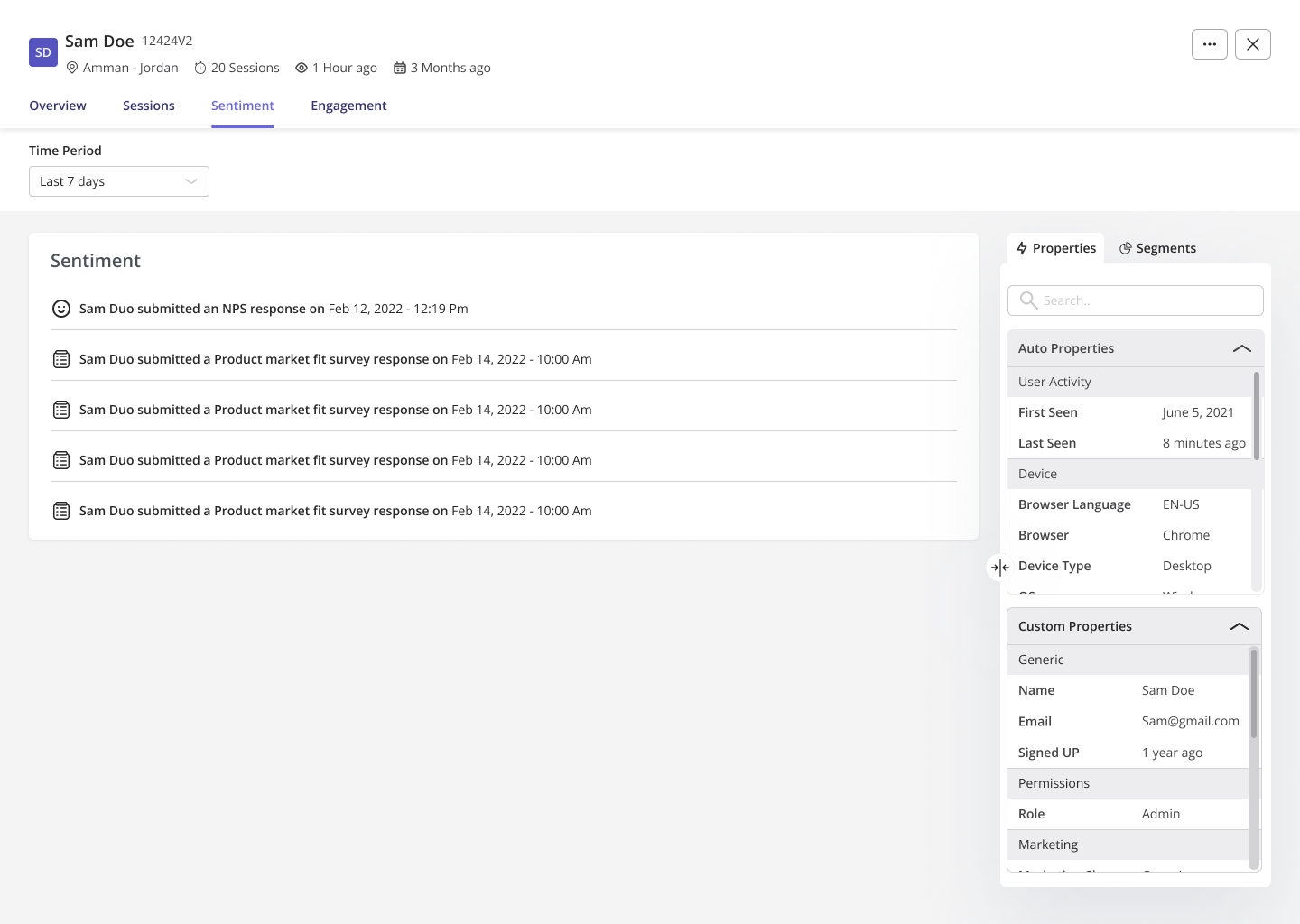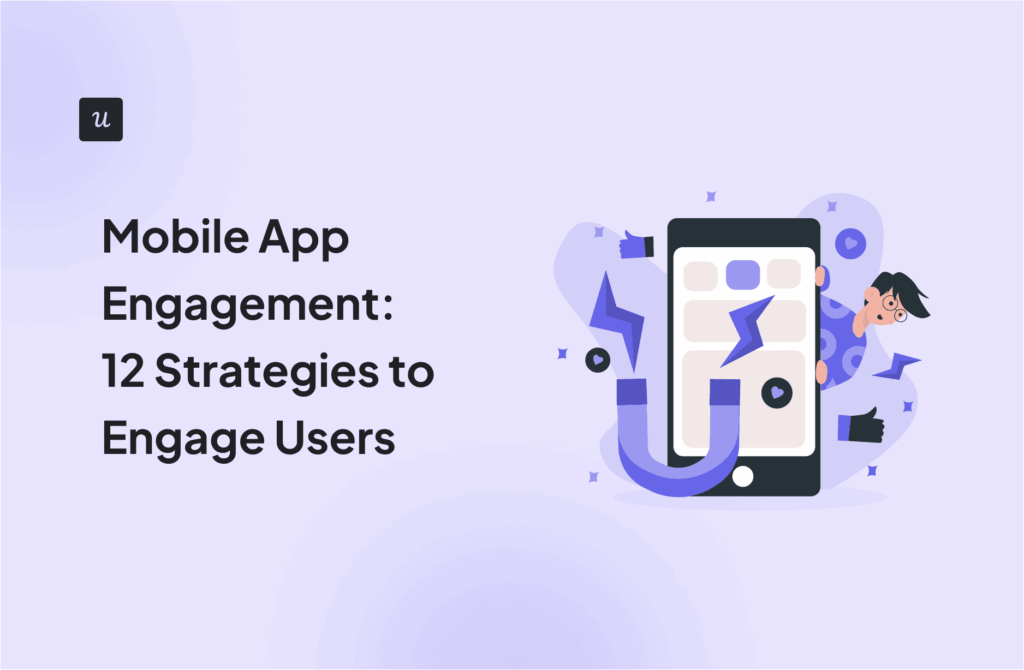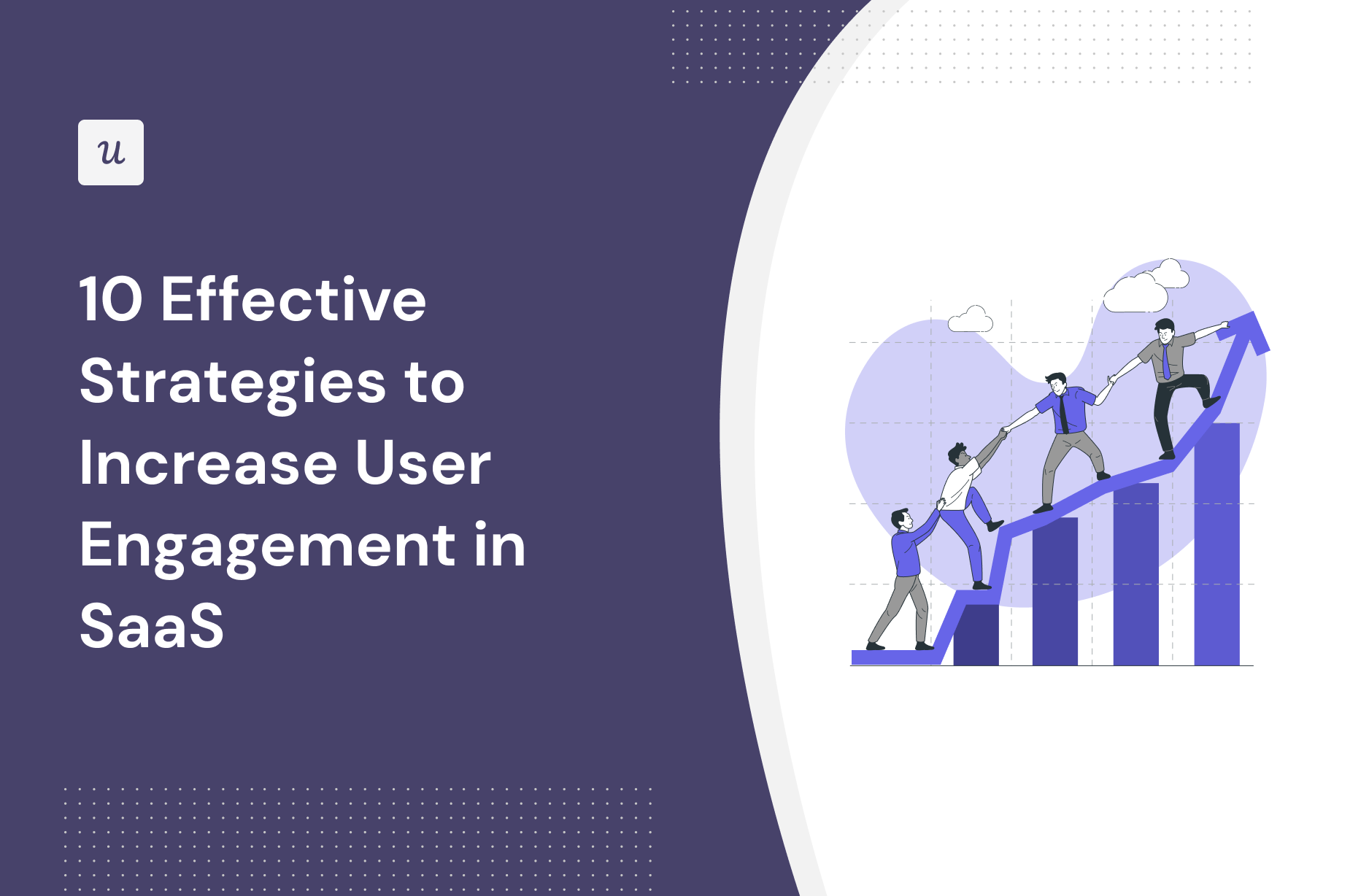
Are you looking for the best tactics to increase user engagement for your SaaS product in-app?
That’s brilliant, as when more of your users/customers continue engaging with your product, your customer retention rate will keep improving.
In this article, you’ll learn all you need to know about increasing user engagement in SaaS:
- What user engagement is.
- Why it is important to track and improve user engagement strategy.
- How to track user engagement metrics.
- Proven methods to increase user engagement.
Let’s get started!
What’s your main goal to increase user engagement?
Try Userpilot Now
See Why 1,000+ Teams Choose Userpilot

What is user engagement?
User engagement refers to the level of interaction, involvement, and attention that users have with a particular product, service, application, website, or content.
It is a measure of how much users are actively participating, using, and interacting with the given product or platform. User engagement can apply to various contexts, including websites, mobile apps, social media, games, and more.
It’s a crucial metric for SaaS companies because it directly correlates with customer satisfaction, retention, and the overall success of the service.
Why is user engagement important?
Effective user engagement strategy helps businesses to:
- Improve customer satisfaction and increase customer loyalty: High user engagement often indicates that users find value in a product or service. Satisfied users are more likely to continue using a product, which can lead to customer loyalty and positive word-of-mouth recommendations.
- Increase user retention: Users engaged with your product or service are less likely to churn or abandon a product or service.
- Improve product and customer experience with feedback: Engaged users are often more willing to provide feedback, which can be invaluable for product improvement. Their insights can help companies identify pain points, bugs, and feature requests, leading to iterative enhancements.
In summary, user engagement is a key driver of a company’s success. It impacts customer satisfaction, retention, revenue, and overall business growth.
How do you measure user engagement?
There are several user engagement metrics you can monitor for your SaaS product:
- Number of active users: This engagement metric shows you how many users actively use your SaaS product within a specific time frame (e.g., daily, weekly, or monthly). It provides insight into the overall reach and popularity of your product.
- Net promoter score: NPS assesses user satisfaction and loyalty among existing users by asking customers how likely they are to recommend your SaaS product to others. NPS helps gauge overall user sentiment, identify areas for improvement, and assess the likelihood of users advocating for your product.
- User stickiness: User stickiness measures how often and consistently users engage with your SaaS product over time. It reveals the level of attachment and habit formation among your user base.
- Feature and product usage: This metric tracks the usage of key features and the overall product. It provides insights into which functionalities are popular and which may need improvement or further promotion.
- Customer retention rate: Customer retention rate calculates the percentage of customers who continue using your SaaS product over a specified period, such as a month or a year.
By visualizing these user engagement metrics on an analytics dashboard, you create a centralized hub for tracking and analyzing your SaaS product’s performance.
This dashboard allows your team to make data-driven decisions, spot trends, and identify areas for improvement.
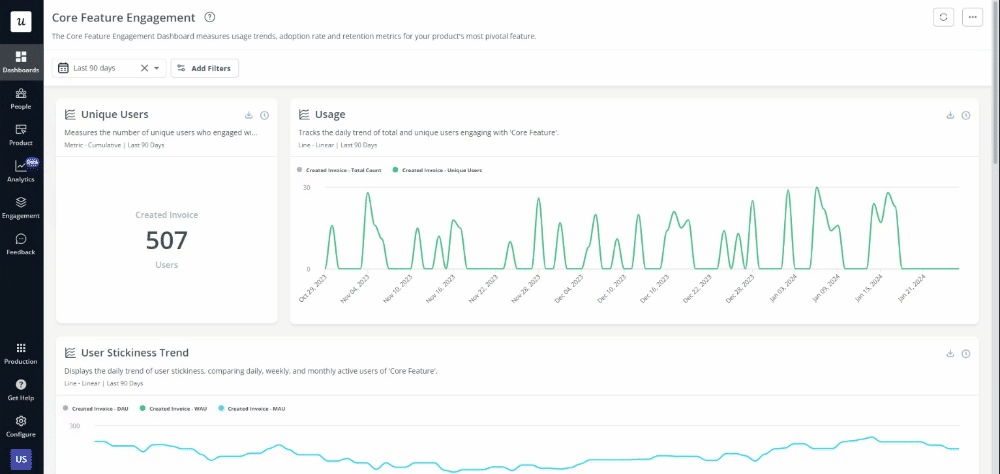
Customization and interactivity within the dashboard enable you to explore data in greater detail, segment users, and respond swiftly to changes in user engagement.
11 user engagement strategies to implement in SaaS
Engagement begins with the user. You need to know what value means to your users at every stage of their user journey. You also need to know how your product provides this value.
Knowing where users get the best value from your product allows you to create more relevant features and in-app experiences in your SaaS product. This in turn increases user engagement.
Now let’s look at 11 of the most effective user engagement strategies you can implement in your SaaS to encourage users:
Create a user journey map to boost engagement at every touchpoint
Creating a user journey map is a potent user engagement strategy that can significantly elevate the overall user experience with your SaaS product.
This process offers a profound understanding of users’ interactions, needs, and pain points from their initial contact to becoming loyal customers.
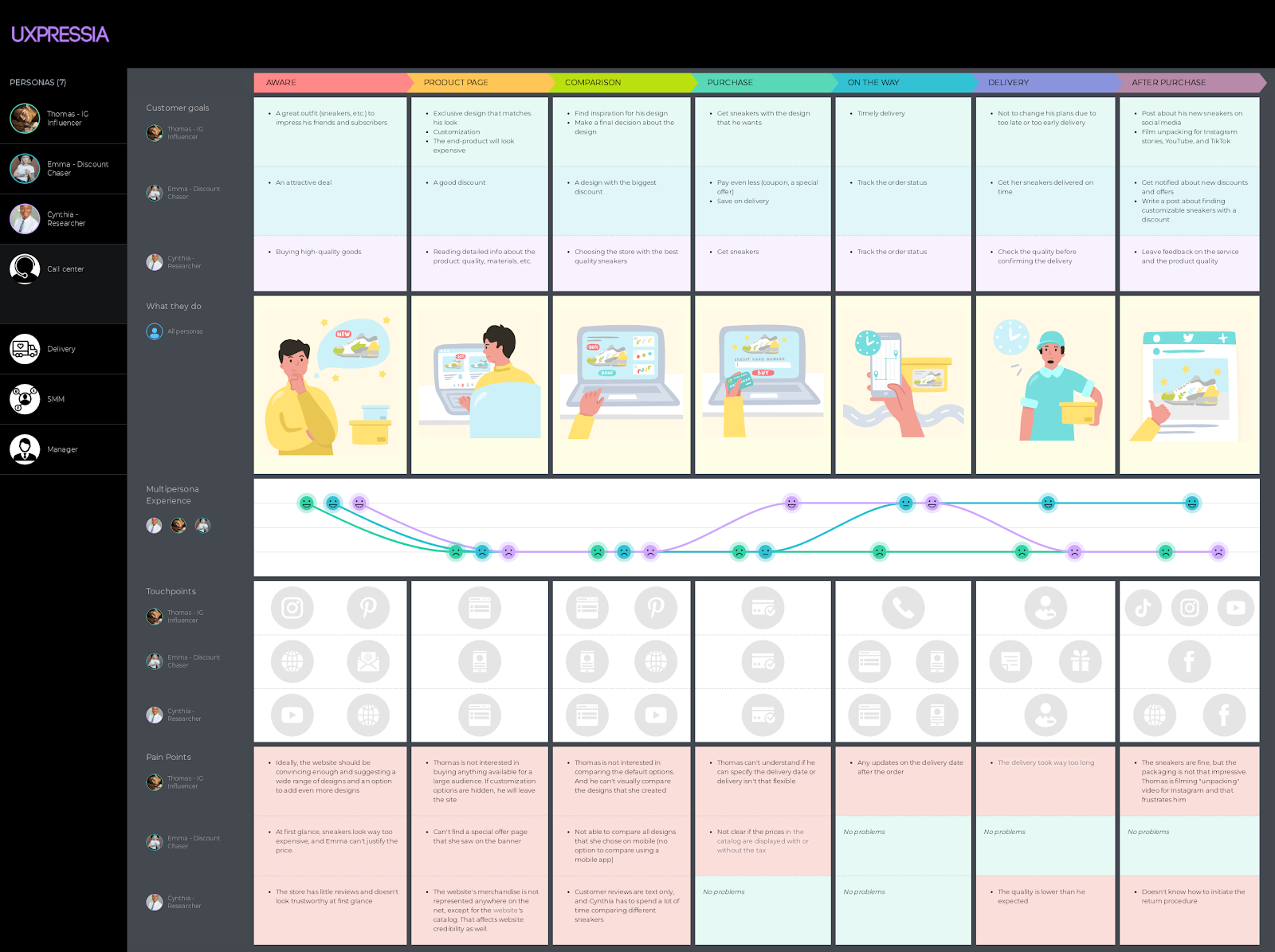
By viewing your product from the users’ perspective, you can empathize with their needs, expectations, and emotions at every stage of interaction. And optimize those touchpoints to improve customer experience and increase user engagement.
Create a frictionless sign-up flow
For most SaaS businesses, the signup flow and user onboarding experience should be as frictionless as possible.
Reduce the number of steps required for sign-up. Aim for a minimalistic approach to gather essential information initially.
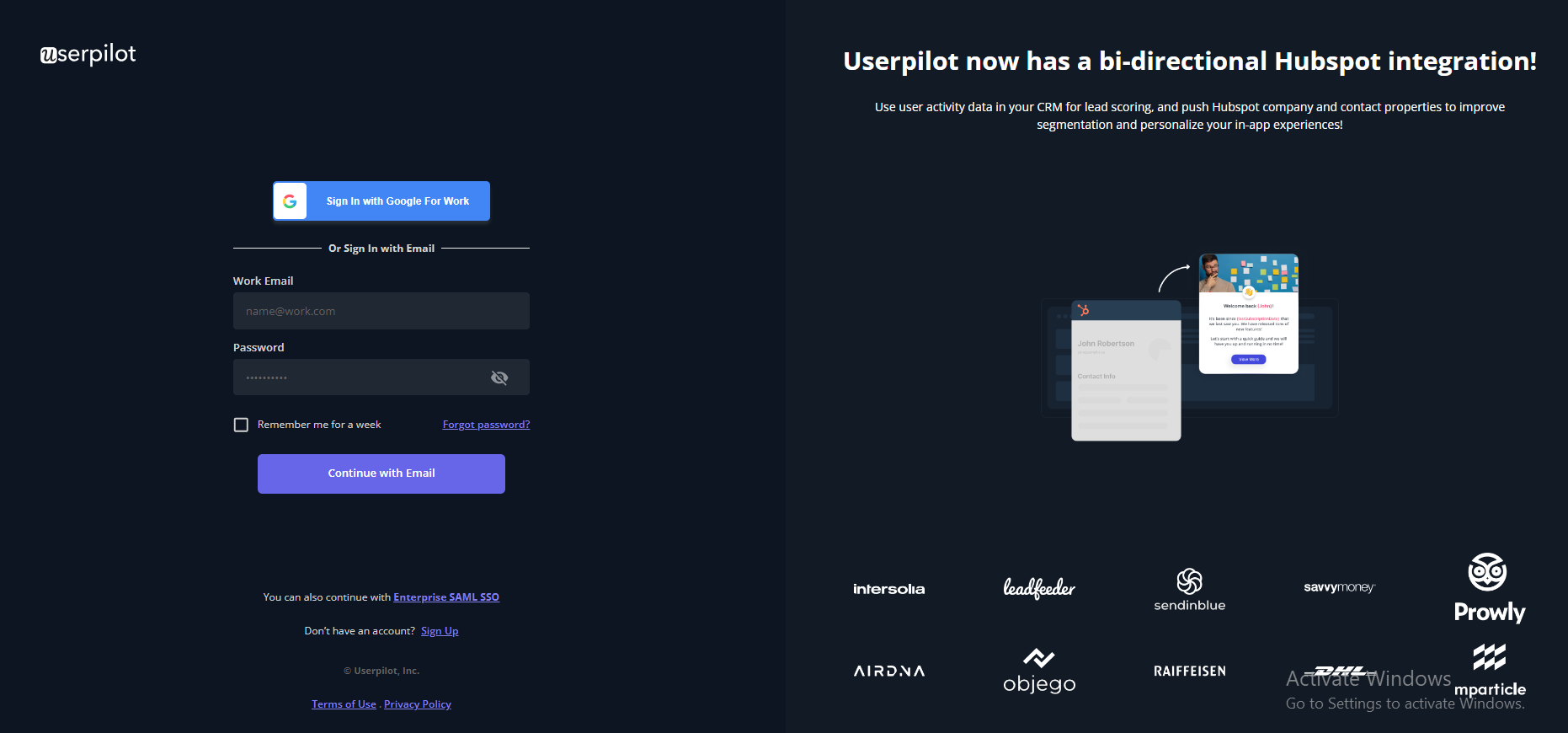
Welcome new users and personalize their onboarding
Once your users have got into your app, greet them with a welcome screen. This will not only leave a good first impression but also allow you to collect the key information about your users (their role, goal, and job to be done) to help you personalize their user onboarding experience.
So, how do you use your SaaS welcome screen to improve your new user activation and customer engagement? By adding a micro survey that will help you collect the information required to segment your users:
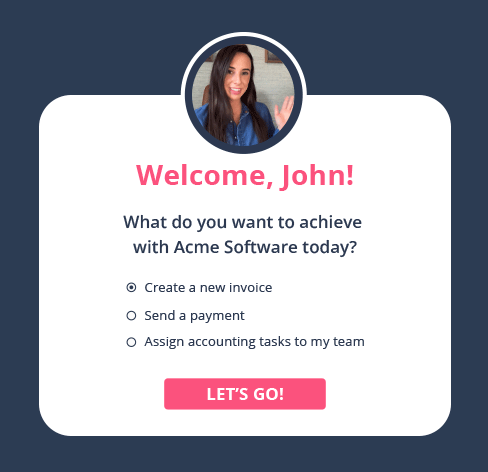
After you’ve collected your user data, use customer segmentation to personalize the onboarding journey.
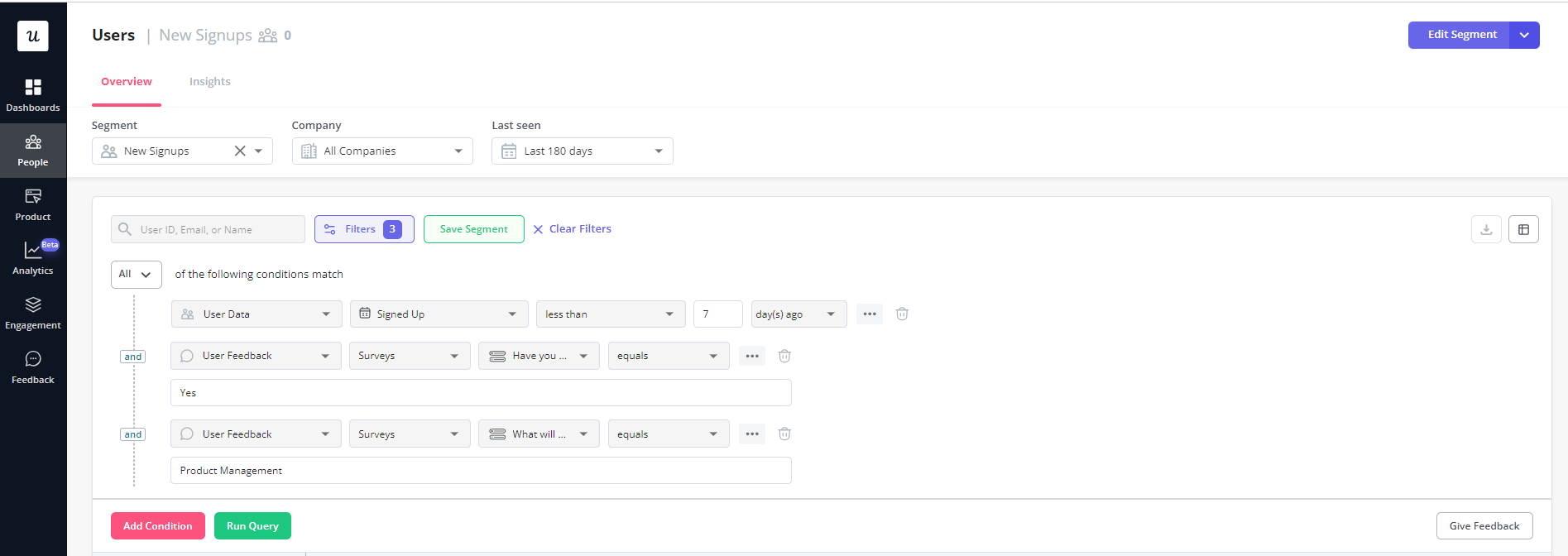
Use in-app messaging to boost user engagement
You shouldn’t drop a ton of messages in front of your users and hope they’ll understand.
Apart from cluttering the user’s interface, these messages may also frustrate and confuse them, resulting in less user engagement. To communicate effectively and increase user engagement, you need to focus on contextual and timely in-app messaging.
In-app messages are used inside your app to provide contextual and timely messages depending on the stage of the user’s journey. These messages could take different forms like tooltips, announcement bars, slideouts, and modals.
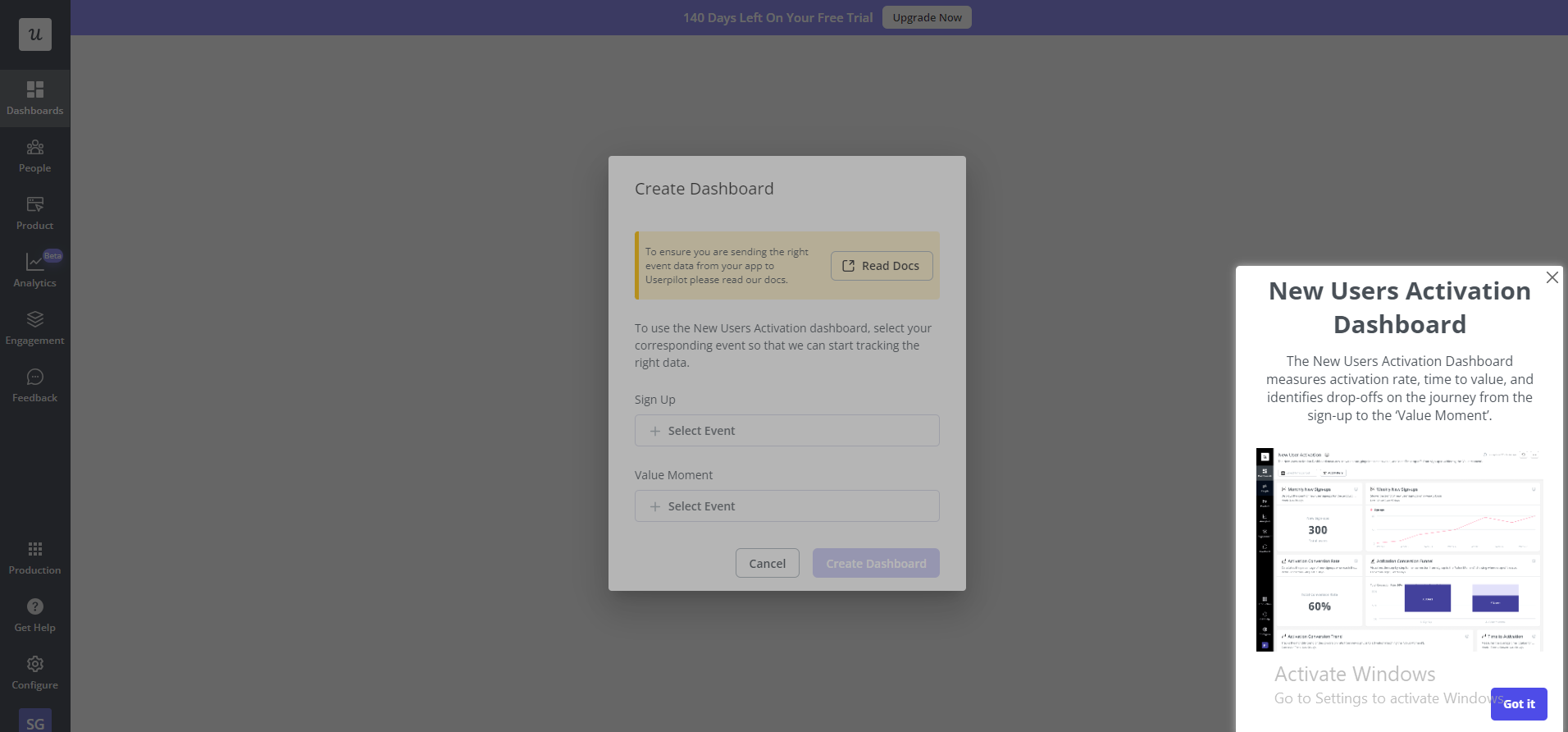
To provide a better customer experience, you can combine different in-app messages like modals and tooltips.
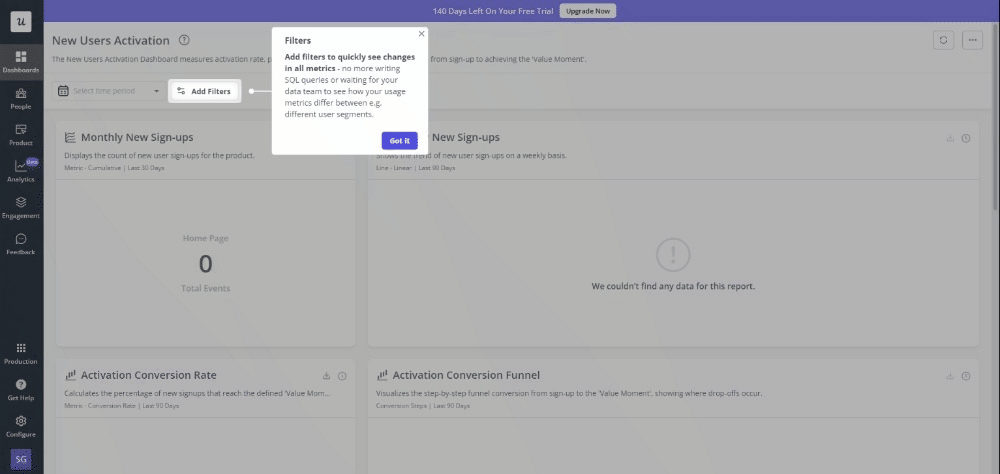
You can also use AI to improve the microcopy in your in-app messaging.
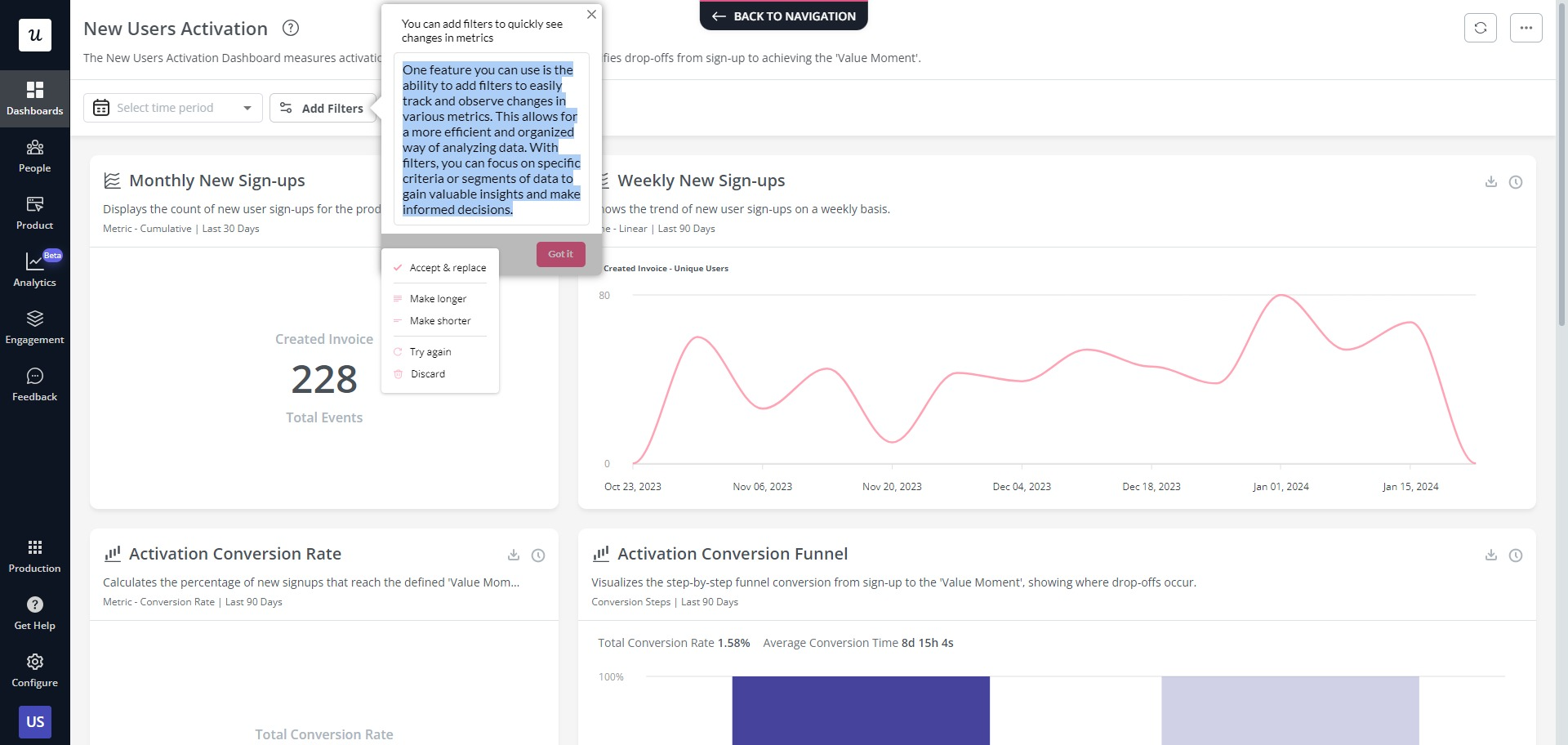
Replace long product tours with interactive walkthroughs
Instead of taking your users through lengthy, boring, and irrelevant product tours, you should try something else – interactive walkthroughs. Interactive walkthroughs improve the user onboarding experience as they help your customers experience the value that your product offers.
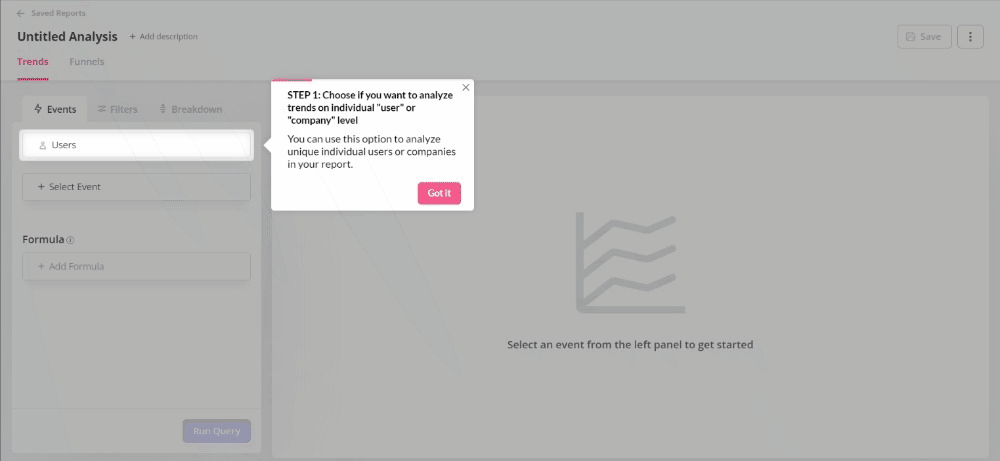
Creating an interactive walkthrough helps you guide your users toward product activation. These walkthroughs also:
- Show the next steps a user should take.
- Push the user to adopt the feature from step 2 only if the user has completed the action from step 1 – as we would know from custom events.
- Are contextual – focused on what is important and relevant to the user at that moment.
- Put the user in control of their own experience.
Reward engaged users to turn them into loyal customers
Rewarding engaged users is a powerful strategy to foster loyalty and convert them into long-term customers.
Recognizing and appreciating user engagement not only strengthens the user-product relationship but also encourages continued interaction with your SaaS platform.
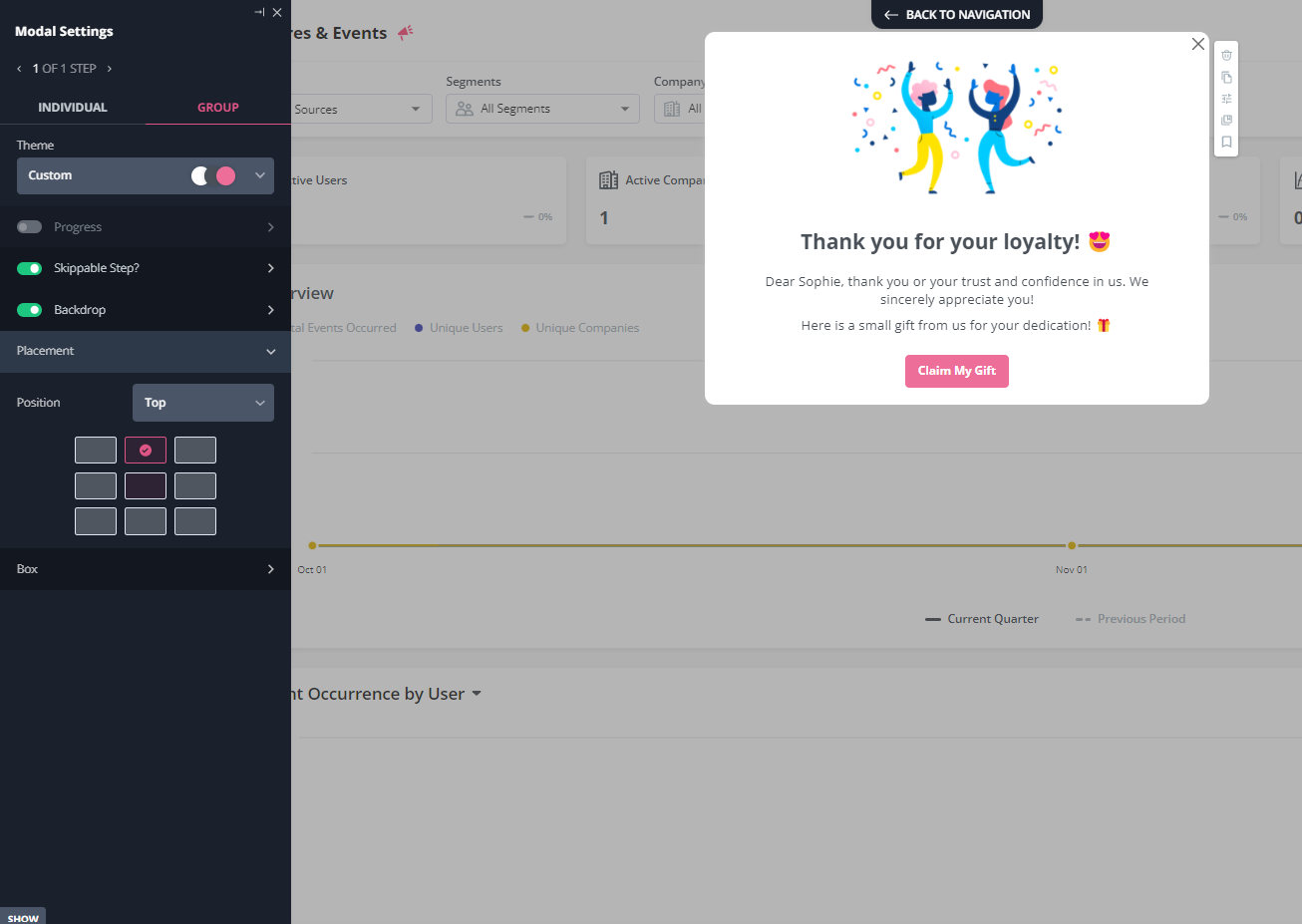
Implement a loyalty program that rewards users for their ongoing engagement. Offer points, discounts, or exclusive access to premium features based on their usage or activity.
Collect and act on user feedback
Collecting valuable feedback from your customers is key to ensuring increased user engagement. And the best way to collect customer feedback in-app is through micro surveys.
Micro surveys are brief in-app survey templates that evaluate the usefulness of your product and its features to your customers or users.
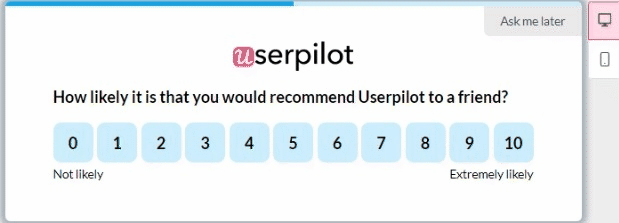
These surveys are useful for collecting user feedback for many reasons:
- They allow you to collect data in-app in a frictionless way.
- They allow you to collect targeted data. For instance, data that is based on the use of specific features.
- They allow you to qualitative feedback from your users concerning your product.
After creating and collecting survey data, you’ll need to act on them quickly because your customers want to see the change. Doing this will improve your user engagement because it shows that your brand listens to its customers. Make sure you let the users know you are working on their provided feedback.
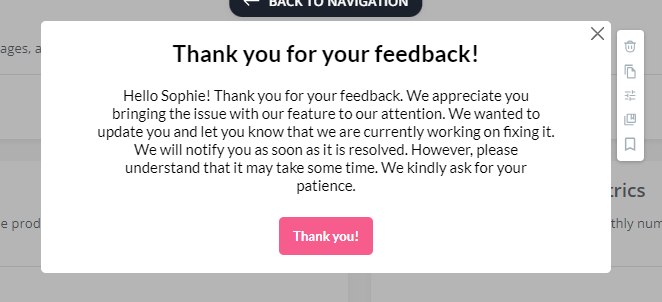
Adopt an omnichannel customer engagement strategy
Adopting an omnichannel customer engagement strategy is a proactive approach to building stronger relationships with your customers across various communication channels.
It allows you to create personalized marketing campaigns for different channels.
You can leverage integrations to send personalized emails triggered by in-app events to engage users and deliver relevant content at the right moment.
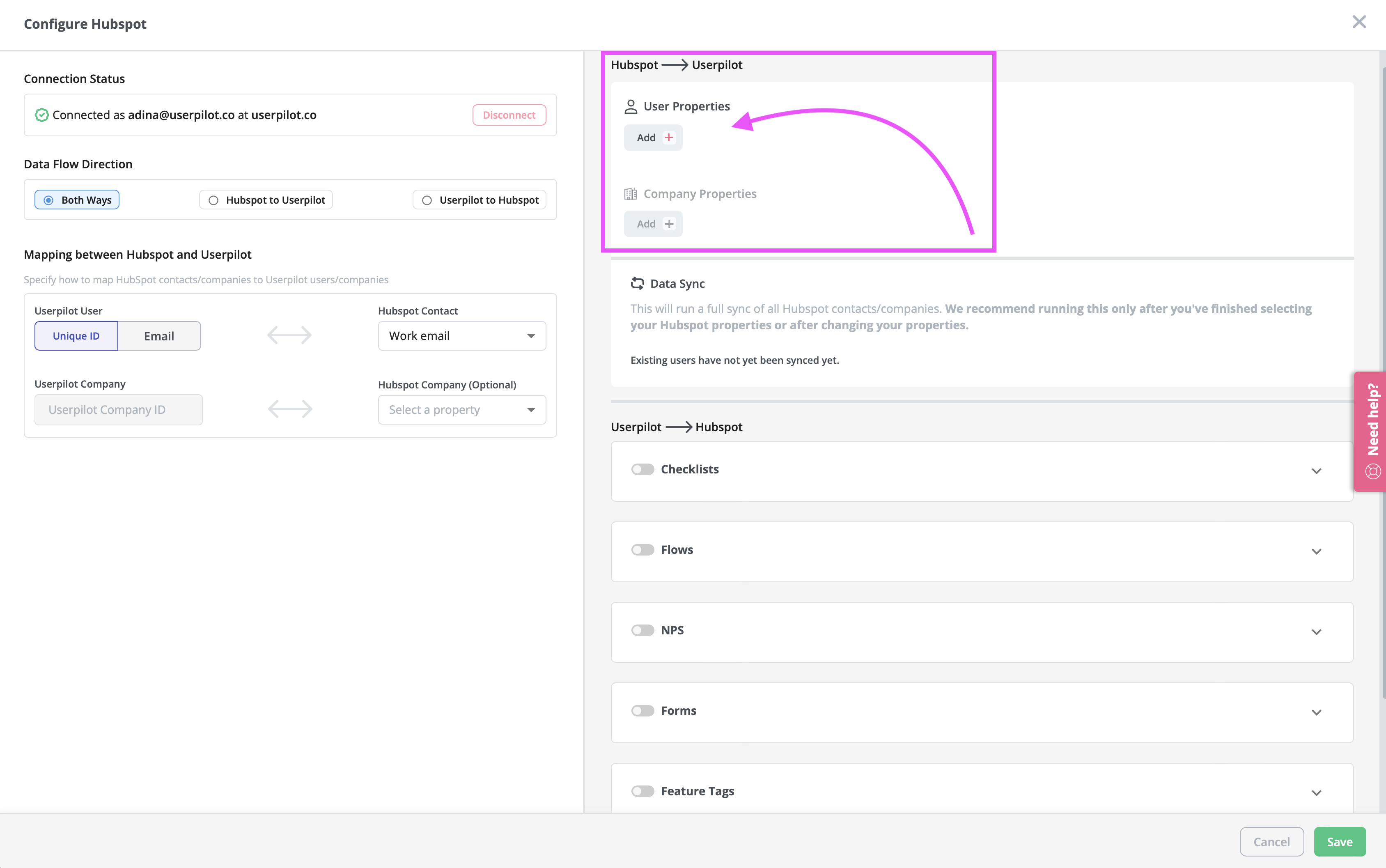
Introduce new features with in-app announcements
You shouldn’t assume that your users will instantly know about the new shiny feature in your SaaS product. Even if they see it, they might not use it, because they don’t know how it works.
After adding a feature, you need to announce it in the right way to your customers.
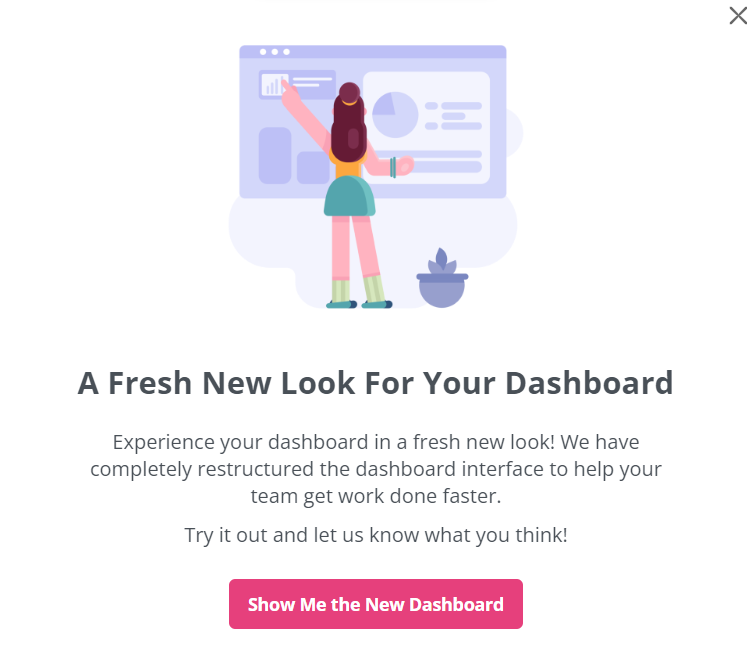
But that’s not all. Trigger an interactive walkthrough that educates the user on how to use the new feature. By announcing this new feature properly, you will succeed in not only driving user engagement but it ensuring the product adoption of your new feature.
Track customer engagement to identify and improve low-engagement areas
Tracking customer engagement and addressing low-engagement areas is essential for continuously improving your SaaS product and enhancing the overall user experience.
Identify and tag the key features of your SaaS product that are critical for user engagement and success. These could be core functionalities or unique value propositions that differentiate your product.
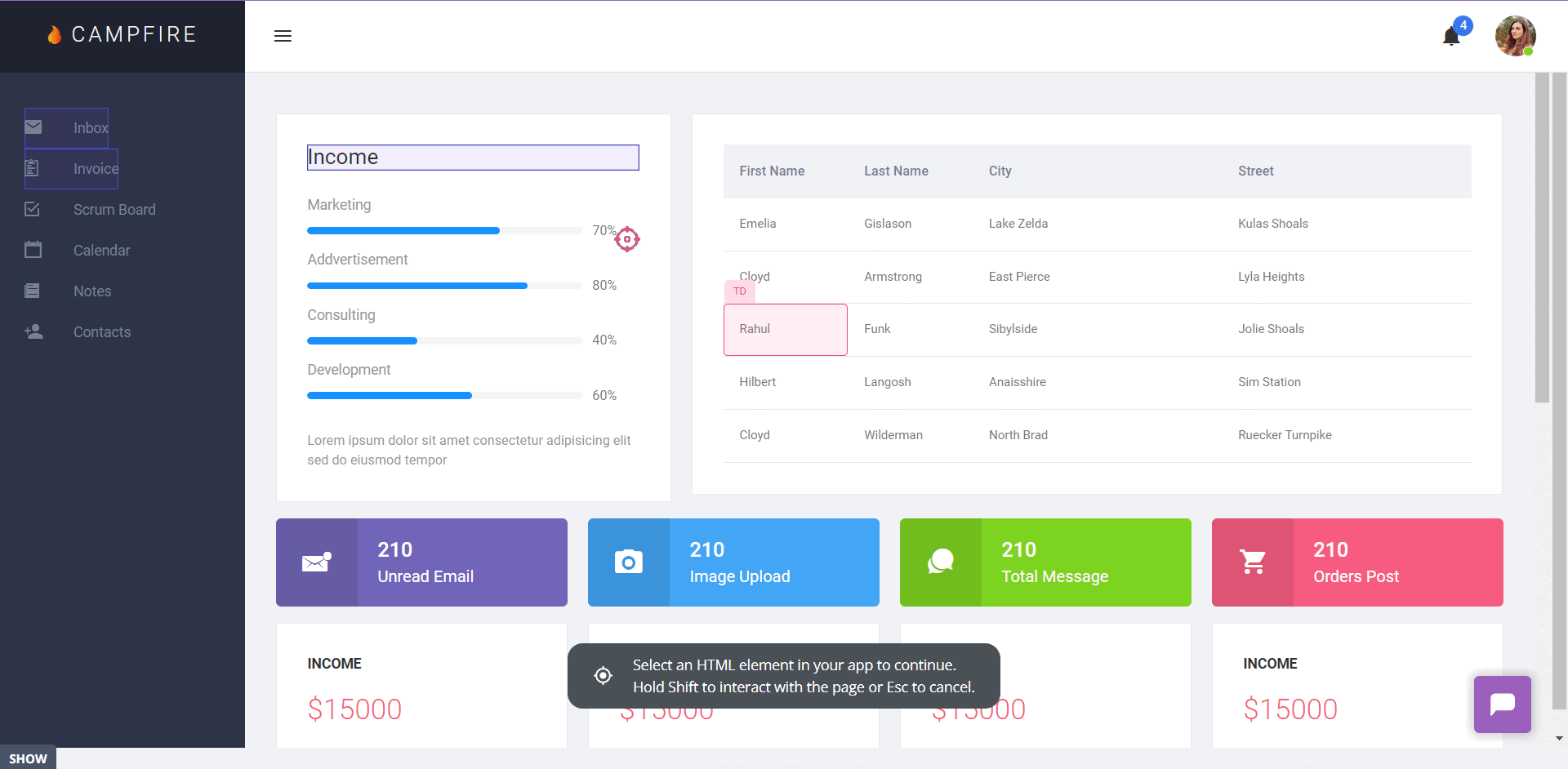
Analyze feature usage to identify features that have low engagement. Look for patterns of underutilization, such as low user adoption, infrequent usage, or high bounce rates within those features.
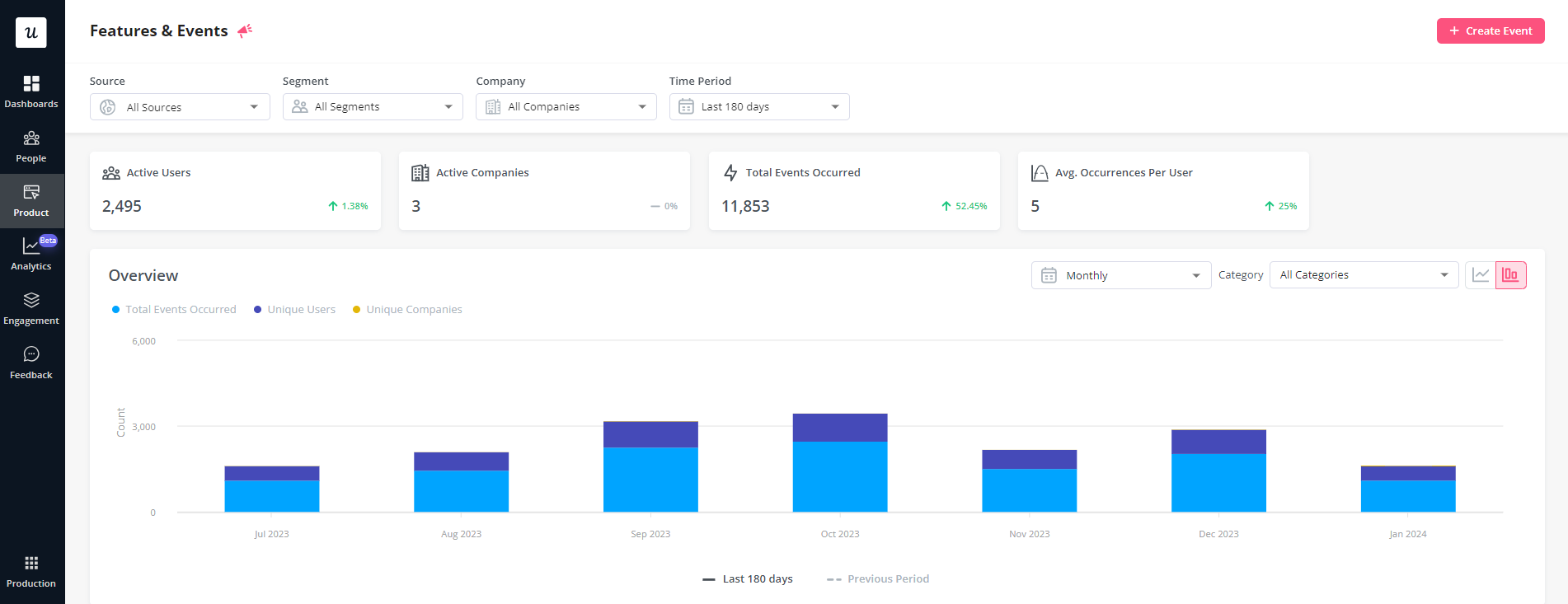
Develop a contextual flow or onboarding process specifically designed to improve engagement with the identified low-engagement features. This flow should guide users toward discovering the value and benefits of those features.
A/B test different flows to understand which resonates with your customers
User engagement is not a set-and-done activity, especially in the SaaS industry.
Continuous testing of different in-app engagement types, messages, and content will help you find the sweet spot for your users.
A/B testing and product experimentation are the keys to discovering what resonates with your customers.
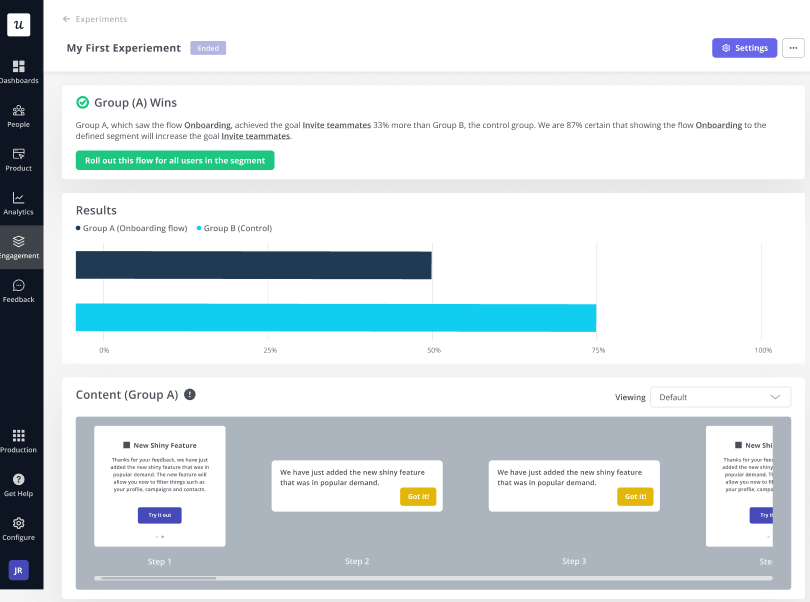
Implement Customer Engagement Strategies with Userpilot

How Userpilot can help you increase user engagement
Userpilot is a versatile platform designed to help you increase user engagement effectively through various strategies and tools.
Userpilot is a comprehensive solution that empowers you to enhance customer engagement in your SaaS product.
Here’s how Userpilot can assist you in this endeavor:
Use different UI elements to create onboarding experiences
Userpilot allows you to design and implement personalized onboarding experiences for your SaaS product using a variety of user interface (UI) elements.
These elements can include tooltips, modals, checklists, and more.
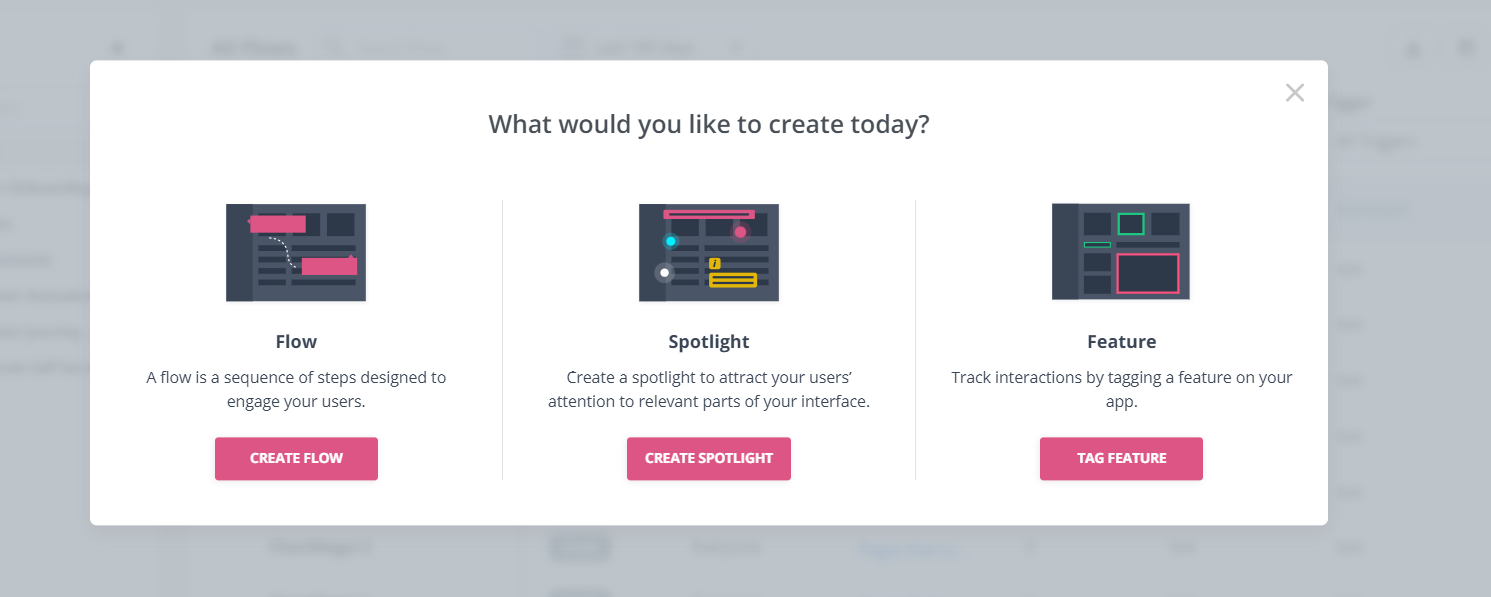
Measure user engagement metrics with the analytics dashboards
Userpilot provides analytics dashboards that enable you to monitor and measure various user engagement metrics. You can track user activity, feature adoption rates, onboarding completion rates, and other key performance indicators (KPIs).
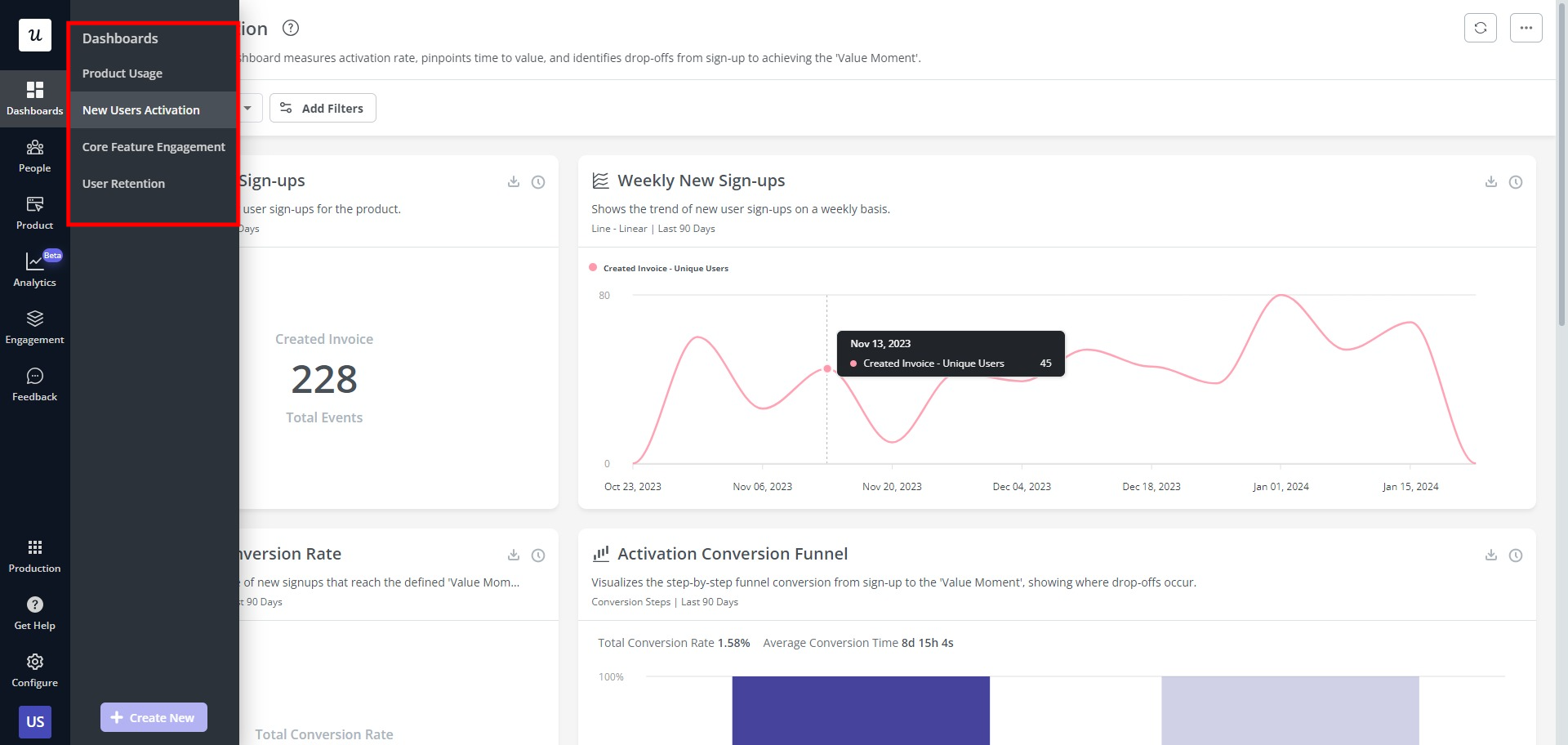
These analytics dashboards offer insights into how users interact with your product, helping you identify areas of high and low engagement. This data-driven approach allows you to make informed decisions to optimize user engagement strategies.
Collect feedback code-free and analyze
Userpilot simplifies the process of collecting valuable user feedback without requiring coding or technical skills. You can create user surveys, or use prebuilt feedback forms easily.
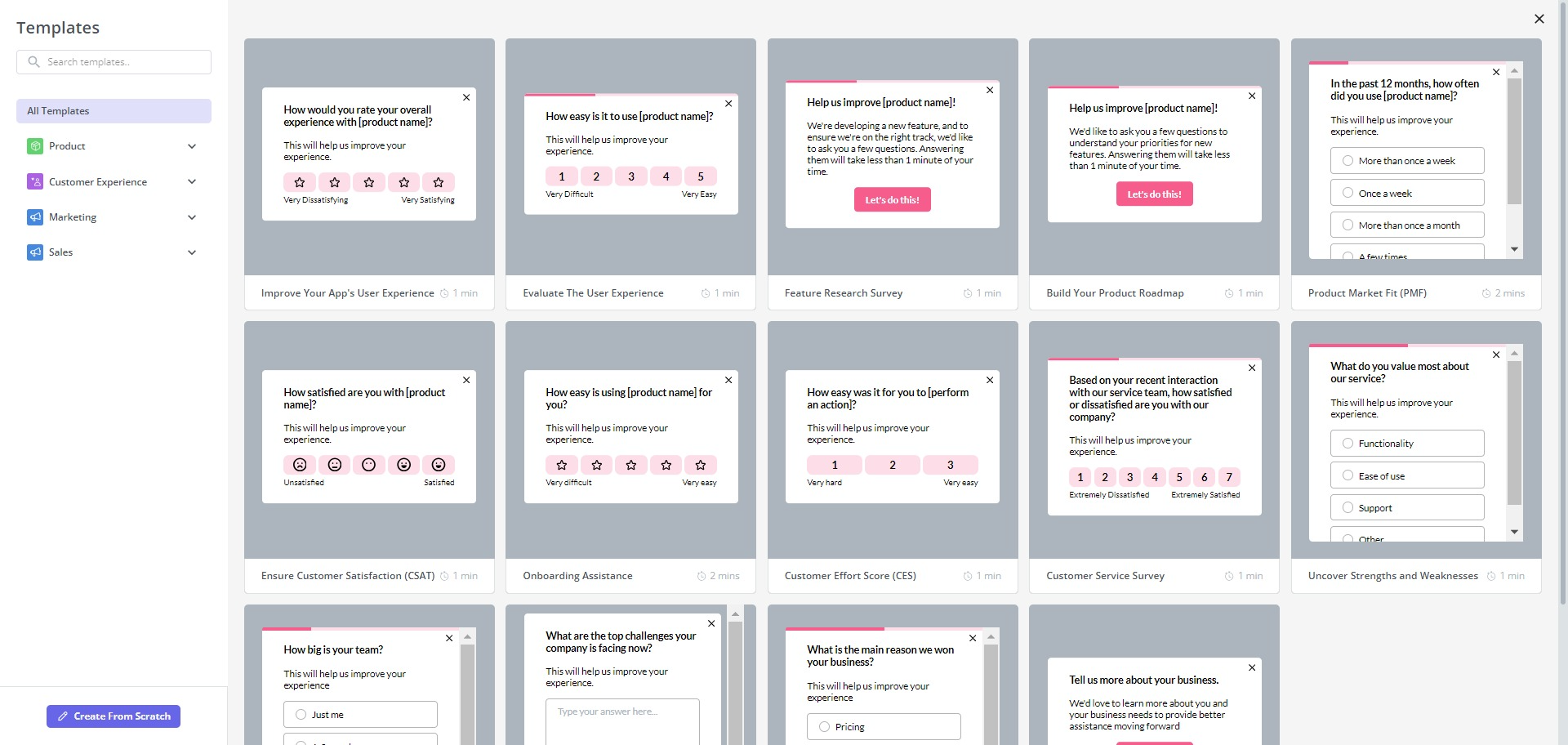
The platform also provides tools to analyze user feedback and sentiments. By understanding user opinions and pain points, you can identify opportunities for improvement, prioritize product enhancements, and address user concerns promptly.
Conclusion
Now that you know the 11 tips for increasing user engagement in-app, the next step is to implement and test them. You don’t need to test them all at once – use these methods one at a time and act on the results you get.
Want to get started with increasing your user engagement? Get a Userpilot Demo and see how you can gain valuable insights that positively affect your bottom line.
Try Userpilot and Increase User Engagement


